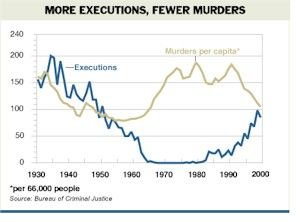no1tovote4
Gold Member
Shattered said:So what amount of "punishment" is good enough for a murderer, then? Why should their victims be dead, and their families be without, while they live, get clothed, housed, fed, and in your scenario, allowed access to exercise equipment?
If your spouse, parents, or children were one of the victims, would you be satisfied knowing this monster is still alive and well, while you're lacking one of the most important people in your life?
Oh, and I would be far more satisfied to know that he will be suffering for the rest of his life in conditions that humans find almost inhumane than to think that he got a nice restful death while my child, parent, wife, etc was killed horribly.

